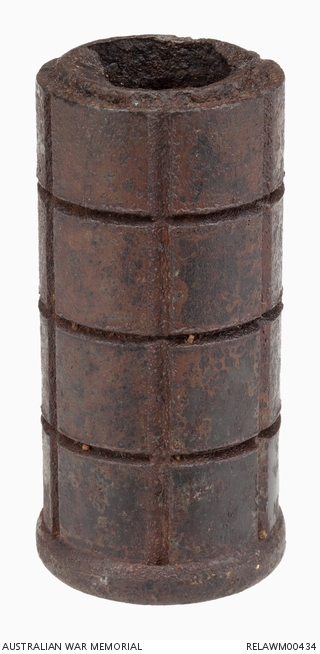| Accession Number | RELAWM00434 |
|---|---|
| Collection type | Technology |
| Object type | Grenade |
| Physical description | Steel |
| Maker |
Unknown |
| Date made | Unknown |
| Conflict |
First World War, 1914-1918 |
Remains of a pitcher grenade : Gallipoli

Remains of a fragmentation grenade, similar in design to the Battye bomb, or the No. 13 or No. 14 pitcher grenade. The main body of the grenade is intact, but the igniter is absent. The sides of the body of the grenade has been divided up into 24 'blocks' by vertical and transverse grooves, which are flat in profile.
This grenade was collected by members of the Australian War Records Section (AWRS) or the Australian Historical Mission (AHM). A small party of AWRS staff, led by Lieutenant William Hopkin James, worked on Gallipoli between December 1918 and March 1919, taking photographs and collecting items for the national collection. The AHM, led by Official Historian C E W Bean, visited Gallipoli from February to March 1919 to collect items for the nation, to record the area through artworks and photographs, and to explore the battlefields to answer some of the 'riddles of Anzac' for the Australian official history of the war.
This grenade may be an improvised or experimental grenade. There was a shortage of grenades generally, but it was very keenly felt at Gallipoli where improvised grenades made from jam tins were highly used. This pitcher grenade is similar in style to the experimental Battye Bomb developed in 1914. Two new versions, the No. 13 and No. 14 grenades were later officially issued in about May 1915. However the fragmentation 'blocks' are flat and not as deep as those on known examples of the Battye Bomb and the No. 13 and No. 14 grenades.